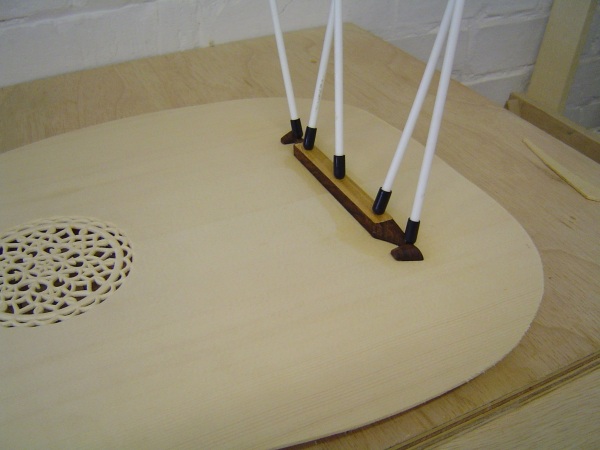[QUOTE=crazymanmichael] colin, wouldn't a vacuum clamp resolve the problem of the inability to clamp through the lute's ornamental rose?[/QUOTE]
Yes it would Michael, but I try and build my lutes in as traditional way as possible, I use no power tools at all when I make them, and I try not even to use sandpaper, just shagreen and scrapers (OK I use sandpaper rolls on the rose). Bridge placement is done by very careful measurement.

Colin

 Have you got pics of your build process?
Have you got pics of your build process?
